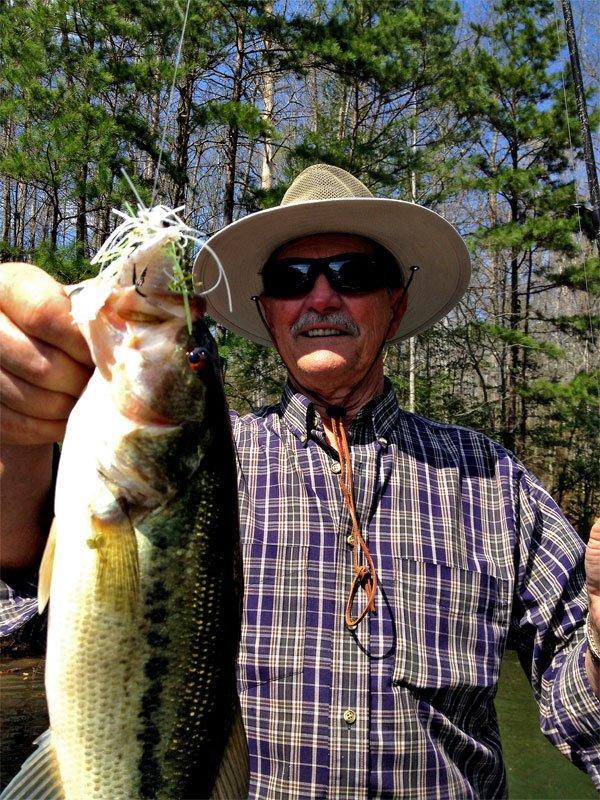Before we discuss this, let’s preface it by saying fishing for bass in the spring often means you’re catching bass off of beds, whether you can see them or not. We actually like to look at bass and interact with them on a very personal level. I’ve learned more about bass behavior watching and interacting with fish on beds than any other time of the year. You can see their curious, defensive and aggressive tendencies. You can see how quickly a fish’s behavior can change – from spooky to downright defiant in a matter of moments. I for one like that.
Some folks try to bed fish but struggle. Others just don’t like to do it. And we certainly respect that. There are several ways I don’t like to fish as well. But for those that want a helping hand on bed fishing we’ve got about 25 years experience on just about every different type of body of water from small creeks to huge highland reservoirs, from coast to coast and north to south. So we thought we’d give you our five favorites for tempting largemouths around the spawn.
1. A Floating Worm – If you follow professional tournament bass fishing, you’ve seen guys running the banks casting a bright worm around as they peer into the shallows trying to find the next bass. The floating worm is an effective bait for tempting fish around the spawn before you ever see them. It has a very quiet entry, subtle finesse action that is not too obtuse around the beds and does not spook like big spinnerbaits and crankbaits can. Working it can range from dead-sticking it to small quick snaps of the rod tip and then letting it flutter after the twitch. We like to rig it both Texas-rigged with no weight and also wacky rigged when there is very little cover or wood to snag.
2. A Tube – A tube is a dynamite bait for bass guarding nests. The reason for that is the hook will cover most of the surface area of the bait. Bedding bass have a real tendency to grab things by their tails and move them off a bed without actually trying to eat what it is in their bed. So the compact profile of a tube with a big hook in it can often give you something to set the hook on. Plus a tube looks like it’s robbing the bass’s bed. I’ve heard of guys putting foam in the end of the tube to make it stand up on its nose more or jamming Alka Seltzer tabs into it to make it bubble. I prefer just a 4.25-inch Zoom White Tube with one side slit to allow better penetration on the hookset.
3. A Shaky Head – A shaky head is nothing more than a jighead with a slender straight-tail worm on it. This subtle presentation can be great for blind casting into the bedding area and just slowly dragging it along. You can also drag it around deeper on the fringes of bedding areas where females often like to lurk after laying their eggs. This is the time of year when a shaky head really catches some bruiser bass in the shallows. Again it’s about the profile this time of year as much as anything as we recently discussed in our blog. And trying to shake the head in a bed in one place can work wonders on curious bass.
4. A Lizard – This is the time of year when bass and lizards are mortal enemies. Salamanders like to crawl through beds and eat eggs and the bass don’t like that one bit. So a lizard pulled around bedding areas on a light Texas rig or light Carolina rig can be deadly. Sometimes when you’re around bedding fish a hopping retrieve can work well. Just snap the rod tip and think about just trying to make the bait jump up and land close to the same spot. It takes some doing.
5. A Small Jig – Anglers often overlook a jig for targeting bedding bass. Again it can be effective to change your profiles often to find a bait the bass will react to. So a white jig does wonders around spawning bass, as does one that looks like a bluegill. You can swim it through the bed, make it nose down into the bedding areas. It has a lot of tentacles that are moving in the slight under currents all the time. I like to trim the weed guard way back to just handful of strands to making hooking a light biting bass easier. A 1/4-ounce jig really shines around the bedding areas.











